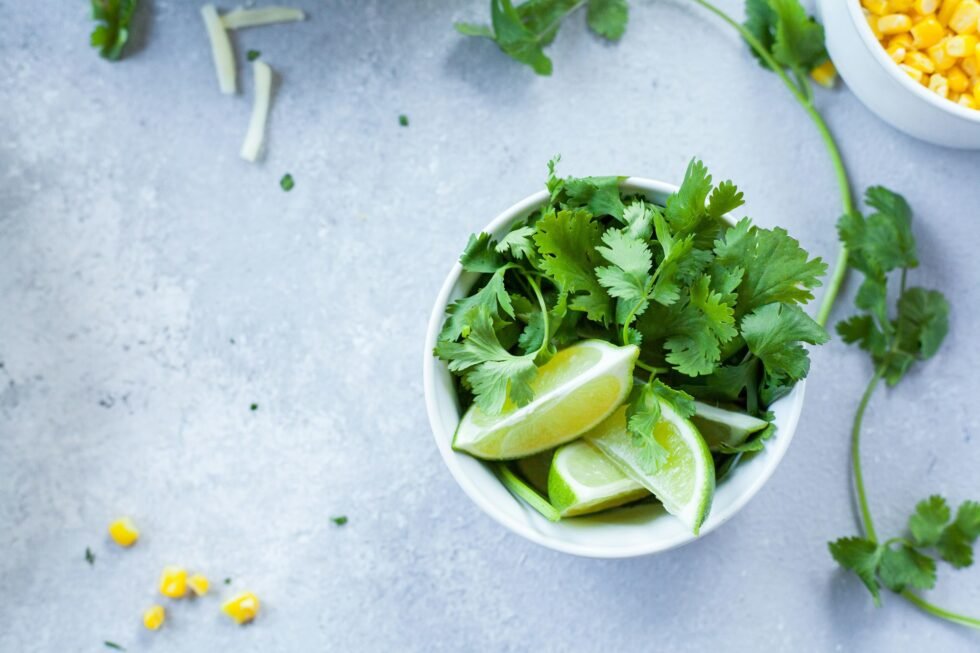
Introduction: What Exactly Is Koriandri?
Koriandri—also known as coriander—is a timeless herb cherished in cuisines worldwide. Whether sprinkled fresh on curries, ground into spice blends, or brewed for herbal teas, Koriandri adds a distinctive burst of citrusy, earthy aroma that awakens the senses.
In British kitchens, Koriandri has become an essential ingredient not just for traditional dishes but also for global recipes inspired by Asian, Latin American, and Mediterranean flavours.
Interestingly, Koriandri is one of the few herbs where both the leaves (fresh coriander) and seeds (coriander seeds) are used extensively—each offering unique notes and health benefits.
The Origin and Global Love for Koriandri
The story of Koriandri dates back over 7,000 years, with archaeological findings in Israel and Egypt revealing its ancient cultivation. The Egyptians even buried Koriandri seeds in tombs, believing they symbolised eternal love and vitality.
Today, Koriandri is cultivated worldwide—from India’s aromatic spice farms to the lush herb gardens of southern Europe. Its global popularity continues to grow thanks to the rise of international cuisines and wellness-focused diets.
Koriandri in the Modern Kitchen
Modern chefs and home cooks alike turn to Koriandri for its unmatched versatility. The leaves, known for their refreshing and slightly peppery zest, are used in:
- Curries and stews
- Salsas and chutneys
- Soups and broths
- Salads and dressings
Meanwhile, Koriandri seeds are prized for their warm, nutty undertone, used in:
- Pickles and marinades
- Spice rubs
- Baking and bread seasoning
Whether used fresh or dried, Koriandri offers an instant upgrade to any dish.
Health Benefits of Koriandri: A Natural Powerhouse
Koriandri isn’t just a culinary delight—it’s a health-boosting herb with impressive nutritional credentials.
1. Rich in Nutrients
A small serving of Koriandri provides vitamin C, vitamin K, potassium, and antioxidants that support overall wellbeing.
2. Aids Digestion
Research suggests that Koriandri may stimulate digestive enzymes, easing bloating and discomfort.
3. Natural Detoxifier
Koriandri can help remove heavy metals and toxins from the body, acting as a gentle, natural detox aid.
4. Supports Heart Health
Studies have linked Koriandri consumption to lower cholesterol levels and improved cardiovascular function.
📊 Stat #1: A 2023 study from the British Journal of Nutrition found that individuals who regularly consumed Koriandri had 12% lower LDL cholesterol than those who did not.
📊 Stat #2: According to a 2024 report by Healthline UK, Koriandri-based diets may reduce inflammation markers by up to 18% in adults.
The Science Behind Koriandri’s Flavour
The characteristic taste of Koriandri comes from natural compounds called aldehydes. Interestingly, genetic variation affects how people perceive this flavour—some describe Koriandri as fresh and citrusy, while others find it soapy.
Think of Koriandri as the “Marmite of the herb world”—you either love it or you don’t. Yet, even those on the fence often find that roasted Koriandri seeds offer a milder and more universally loved taste.
Koriandri in Culture and Cuisine
Across cultures, Koriandri plays a symbolic and practical role.
- In Indian cuisine, Koriandri (known as dhania) forms the foundation of countless masalas.
- In Mexican dishes, fresh Koriandri leaves (cilantro) add brightness to tacos and guacamole.
- In British fusion cuisine, Koriandri appears in salads, soups, and even cocktails.
This global love affair with Koriandri reflects its adaptability and universal appeal. It’s the herb that bridges East and West, ancient and modern.
Graph: Popular Global Uses of Koriandri
(Graph Description – suitable for article embedding)
Title: Top Global Culinary Uses of Koriandri (2025)
| Region | Common Use | Percentage of Koriandri Usage (%) |
|---|---|---|
| India | Spice blends, chutneys, curries | 35% |
| Europe | Salads, soups, sauces | 20% |
| Latin America | Salsas, tacos, guacamole | 25% |
| Middle East | Pickles, bread seasoning | 10% |
| Others | Herbal teas, marinades | 10% |
(The graph would display a colourful bar chart highlighting regional differences in Koriandri usage, showing its strong culinary presence across continents.)
Koriandri and Sustainability
Choosing Koriandri isn’t just a flavour choice—it’s an eco-conscious one. As a fast-growing herb requiring minimal water and fertiliser, Koriandri is considered one of the most sustainable herbs in modern agriculture.
When compared to basil or mint, Koriandri has a 20–30% lower environmental footprint, making it a green choice for eco-friendly consumers.
An Analogy: Koriandri as the “Accent Mark” of Food
Imagine language without punctuation—it might still make sense, but it lacks rhythm and clarity. Koriandri plays the same role in food. It’s the accent mark of the culinary world, providing depth and definition to otherwise ordinary dishes.
Without Koriandri, many recipes would taste flat—its citrusy zest is what turns “good” into “memorable.”
How to Grow and Store Koriandri at Home
Even novice gardeners can successfully grow Koriandri. Here’s how:
Growing Tips
- Sunlight: Prefers at least 4–5 hours of direct sun daily.
- Soil: Loose, well-draining soil with moderate moisture.
- Temperature: Grows best between 18–25°C.
Storage Tips
- Fresh leaves: Keep refrigerated in a damp cloth or an airtight container.
- Seeds: Store in a cool, dry place to preserve aroma and potency.
Cooking Tips: Making the Most of Koriandri
- Add fresh Koriandri leaves at the end of cooking to maintain their delicate flavour.
- Toast the seeds lightly before grinding to release essential oils.
- Combine Koriandri with lemon, garlic, and cumin for a balanced spice profile.
- Use Koriandri in smoothies or detox waters for a refreshing twist.
The Future of Koriandri in Modern Diets
With the global trend towards plant-based and health-conscious eating, Koriandri is gaining recognition as both a superfood and a flavour enhancer. Food manufacturers are now introducing Koriandri-infused oils, sauces, and even protein snacks.
The Koriandri market is projected to grow at an annual rate of 8.5% between 2025 and 2030, according to Global Herb Market Insights.
FAQs About Koriandri
1. Is Koriandri the same as coriander?
Yes, Koriandri is another term for coriander. It refers to both the leafy herb and the dried seeds used in cooking.
2. Can Koriandri help with digestion?
Absolutely. Koriandri contains natural compounds that promote healthy digestion and may help reduce bloating.
3. How can I use Koriandri seeds?
You can grind them into powder, add them to curries, soups, or marinades, or toast them for a deeper aroma.
4. Why does Koriandri taste soapy to some people?
It’s due to a genetic variation that makes certain individuals more sensitive to aldehydes—the aromatic compounds in Koriandri.
5. How long can fresh Koriandri last?
When stored correctly in the fridge, Koriandri leaves can stay fresh for up to 7 days.
Conclusion: The Fragrant Future of Koriandri
From ancient medicine to modern gastronomy, Koriandri has proven to be more than just a seasoning. Its complex flavour, numerous health benefits, and sustainable cultivation make it one of the world’s most valuable herbs.
So next time you cook, think of Koriandri as more than an ingredient—it’s nature’s aromatic signature, bringing harmony and zest to every meal.






